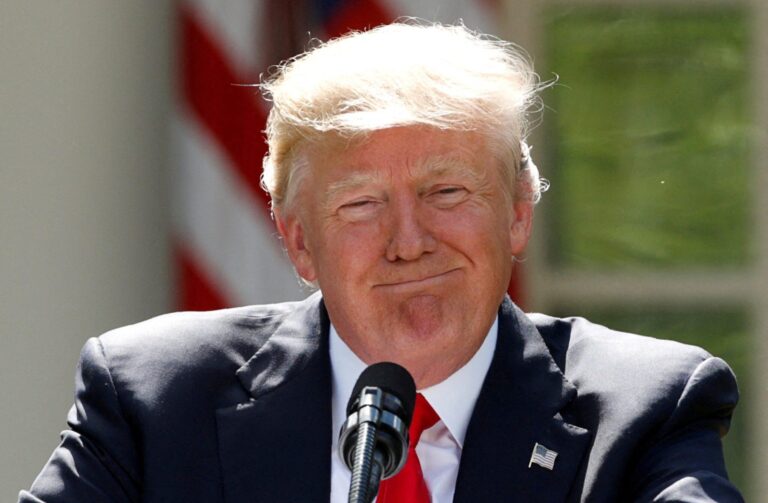Despite former President Donald Trump’s vocal skepticism and policy rollbacks on climate change, countries like China, Brazil, and others continue to push forward with ambitious environmental targets. In a striking rebuke to the U.S. stance during the Trump administration, these nations are setting higher climate goals aimed at reducing emissions and accelerating the global transition to cleaner energy. This determination underscores a shifting geopolitical landscape in climate leadership, as key players commit to more aggressive action despite political headwinds.
Trump’s Climate Rhetoric Fails to Deter Global Ambitions on Emissions Reductions
Despite former President Donald Trump’s vocal skepticism about climate change policies, several major global economies continue to escalate their commitments to reducing greenhouse gas emissions. Nations like China and Brazil have unveiled ambitious targets aligned with the Paris Agreement’s goal to limit global warming, signaling a robust commitment to environmental stewardship. This drive stems from an increasing recognition of climate change’s tangible impacts on agriculture, health, and economic stability, compelling leaders to prioritize sustainable development regardless of political rhetoric originating from the U.S.
Key factors fueling this momentum include technological advancements, economic incentives, and international pressure. Renewable energy costs have plummeted, making clean alternatives more economically viable than ever. Meanwhile, international forums and trade agreements are reinforcing accountability through transparent reporting and shared goals. The following table highlights some of the progressive climate targets set by leading countries recently:
| Country | Target Year | Emission Reduction Goal | Notable Strategy |
|---|---|---|---|
| China | 2060 | Carbon Neutrality | Expansion of solar & wind capacity |
| Brazil | 2030 | Reducing deforestation by 80% | Forest conservation programs |
| India | 2030 | Increasing renewable energy to 500 GW | Massive solar park projects |
| European Union | 2030 | At least 55% reduction from 1990 levels | Green Deal and carbon pricing |
What this means moving forward:
- Global climate leadership is no longer centered solely on the U.S.
- Economic benefits of clean energy foster broader adoption.
- International cooperation strengthens accountability and progress.
- Local and regional initiatives supplement national commitments.
China and Brazil Lead the Charge with Aggressive National Climate Targets
Despite global political headwinds, China and Brazil have emerged as frontrunners in the international effort to combat climate change, announcing more ambitious goals for reducing greenhouse gas emissions. Both nations have committed to aggressive targets that go beyond their previous pledges, signaling a determined shift toward a cleaner energy future. China’s plan includes ramping up renewable energy capacity and aiming for carbon neutrality by 2060, while Brazil has pledged to drastically reduce deforestation and invest heavily in sustainable agriculture.
These commitments come amidst growing pressure on other large emerging economies to enhance their climate actions. Key elements of their strategies include:
- Expansion of renewable energy infrastructure such as solar and wind farms
- Stricter enforcement of environmental regulations in industrial sectors
- Collaborative international partnerships to mobilize green financing
| Country | New Target | Key Initiative |
|---|---|---|
| China | Carbon Neutral by 2060 | Massive wind & solar projects |
| Brazil | Reduce deforestation by 80% by 2030 | Forest protection & sustainable farming |
Experts Urge Enhanced International Cooperation to Sustain Momentum Beyond US Influence
As global leaders convene to address climate change, experts emphasize the critical need for robust international collaboration that transcends the influence of any single nation, including the United States. Despite political rhetoric aimed at curbing climate ambitions, countries such as China and Brazil are forging ahead with intensified emissions reduction targets, demonstrating a resolute commitment to sustainable development. Analysts argue that sustaining this momentum requires scalable frameworks that enable knowledge sharing, technology transfer, and financing to be accessible and equitable across all nations.
Key elements identified by specialists to enhance global climate cooperation include:
- Multilateral funding mechanisms to support green infrastructure in emerging economies.
- Binding international agreements with enforceable deadlines and accountability measures.
- Open data platforms promoting transparency and real-time progress monitoring.
- Cross-border innovation hubs facilitating shared research on renewable technologies.
| Country | 2025 Emissions Target | Renewable Energy % | International Collaboration Status |
|---|---|---|---|
| China | Peak by 2023 | 35% | Active participant |
| Brazil | Reduce 50% by 2025 | 45% | Leading in Amazon protection |
| India | Non-fossil 40% by 2025 | 42% | Expanding solar alliances |
| EU | 55% reduction by 2030 | 38% | Coordination hub |
In Conclusion
As China, Brazil, and other nations continue to advance their climate ambitions despite former President Trump’s dismissive rhetoric, the global momentum toward addressing environmental challenges remains steady. While political statements from Washington may fluctuate, the commitment of these countries signals a broader shift in international climate leadership-underscoring the growing recognition that sustainable development and environmental responsibility are priorities that transcend national politics. The evolving landscape suggests that, regardless of U.S. federal stance, the global community’s pursuit of higher climate goals is poised to persist and perhaps even accelerate in the years ahead.




